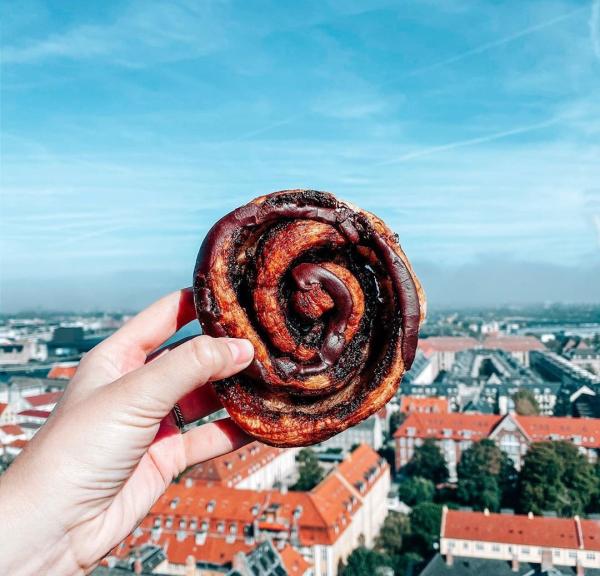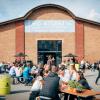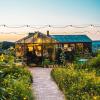
Take a bite out of the world of Danish pastries
Yes, Danish pastries are our thing, but there's plenty more deliciousness tucked away in our bakeries. Take our sticky palms as we guide you through some of our favourites here.
Whatever the question, cake is the answer
There is a sweet treat, and Danish pastry, for every occasion in Denmark. Do you know your snegle from your spandauer? Your småkager from your kransekager? Not sure what we’re talking about? Don't worry, we've prepared the most delicious guide to take you through it all, right here.


The best Danish pastries
Let’s get started with those pastries. There’s more than one type of ‘Danish’ in Denmark – and to make things even more confusing, we call them wienerbrød or Viennese bread, as the inspiration for them came from a trip a Danish baker took to Vienna back in the 19th century. That’s right, Danish pastries aren’t even Danish. Who knew? (We did).
Typical Danish pastries include a snegl, a cinnamon roll-style pastry, a spandauer, a pastry with a dab of custard cream in the middle (you probably know this as a ‘Danish pastry’), and a tebirkes, a pastry with remonce in the middle and poppy seeds all over the top. There are also seasonal pastries and a special pastry just for a Wednesday, the Onsdagsnegl, baked by the oldest bakery in Copenhagen, Skt Peders Bageri.
Where to buy the best pastries in Denmark
- Hart, Copenhagen
- Jumbo, Aarhus
- Bageriet Benji, Copenhagen
- Vesterports Bageri, Fyn
- Tir Bakery, North Zealand
- ...and find out about Copenhagen's best bakeries right here.
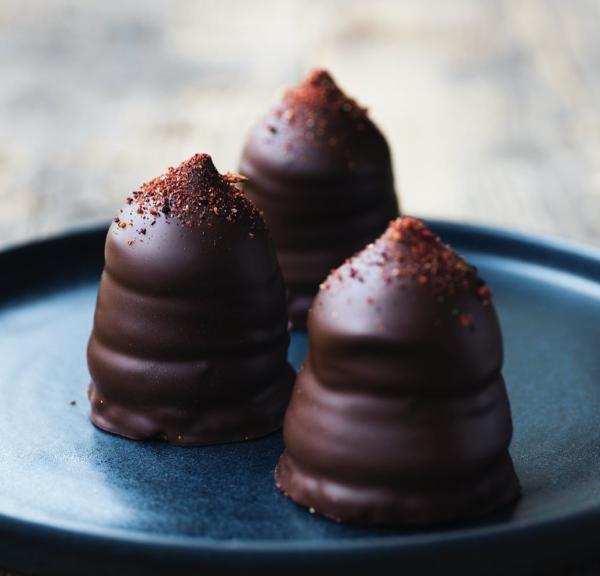
You want a piece of me?
The best Danish cakes.
Pour yourself a cup of coffee – the correct accompaniment to a Danish cake, sorry tea drinkers – and get settled in. Danish patisseries create the most mouth-watering cakes and these are just the tip of the iceberg. Start with a flødeboller, best described as soft meringue on a light wafer base all covered in chocolate. It’s like a Tunnocks Teacake, for any Brits reading, but a thousand times more refined.
Any traditional Danish bakery worth its salt sells chocolate cake and carrot cake; they should also sell drømmekage (‘dreamcake’) a sponge cake topped with dark sugar and coconut, an Otello cake, a thin sponge cake topped with cake cream, marzipan, whipped cream and dark chocolate icing; and a Sara Bernhard, which is a macaroon, topped with chocolate cream and coated with dark chocolate. If you’re in Copenhagen, a couple of great cake shops to check out are Cakenhagen at Tivoli, for its fine individual cakes, and Conditori La Glace, the grand dame of conditoris, for its famous Sports Cake.

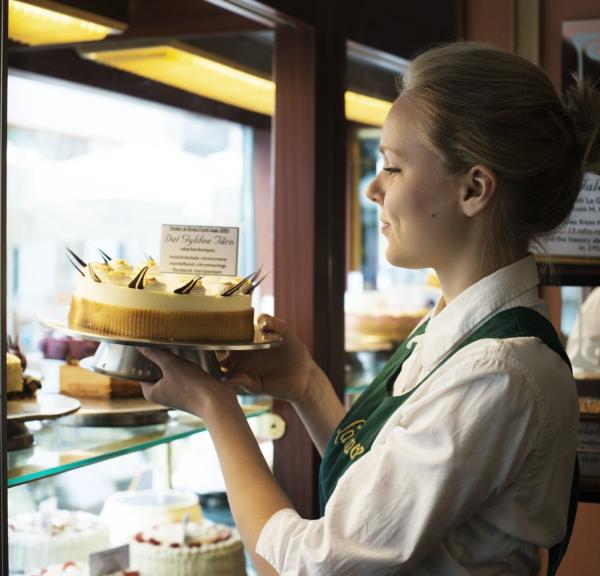
Let them all eat cake!
The best regional cakes in Denmark.
Cakes are a serious business in the regions of Denmark. From the north of Jutland to the border region with Germany, the cakes you are served reflect where you are in the country.
South Jutland (pictured above) is the most famous region for cakes in Denmark. Here, you'll find a special type of spicy honey cake spread with apricot jam or buttercream, and also the South Jutland cake table. This tradition is all about preparing a special cake table for a party or an event of 21 different cakes (seven dry, seven soft and seven hard) and has a strong historical connection going back to the Prussian War of 1864. Wear your stretchy trousers.
Fyn is famous for its brunsviger. This cake is made from soft, yeasty dough and is topped with brown sugar mixed with butter. Traditionally served warm, it’s really popular and available all over the country, but of course the best is in Fyn.
South Zealand – the area south of Copenhagen – has a series of different local cakes too, from ‘goose breast’, a type of cream cake topped with marzipan that has a round shape like, you’ve guessed it, a goose breast, to ‘palm cakes’, a flat roll flavoured with rosewater and topped with almonds and sugar, only baked at Easter.
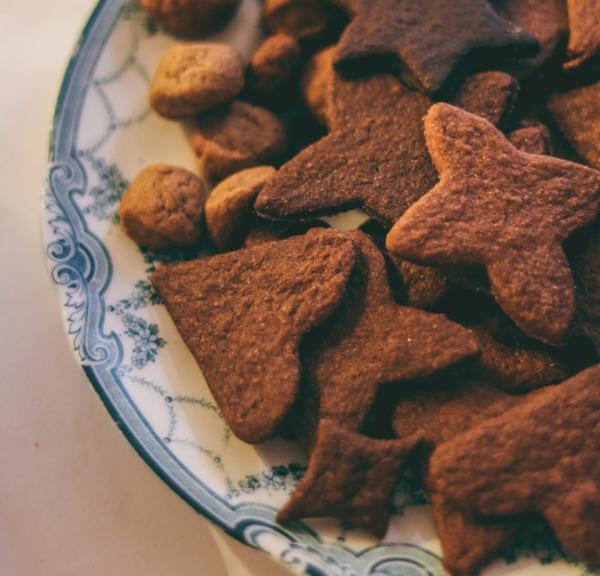

The last crumb.
Denmark's best biscuits.
Danish biscuits are not as high up on the menu as cakes and pastries. The tin of butter biscuits that you might take home as a souvenir, and then inexplicably store your sewing kit in, are not eaten on a daily basis in Denmark. Instead, you are more likely to come across småkager, small crunchy brown sugar biscuits, hindbærsnitte, a buttery biscuit with raspberry filling and icing, and pebernodder, a small round cinnamon and cardamon cookie served around Christmas.
Not quite a biscuit and not quite a cake, there’s also the romkugle, a delicious bite of rum-flavoured ball made from leftover cake in the bakery.
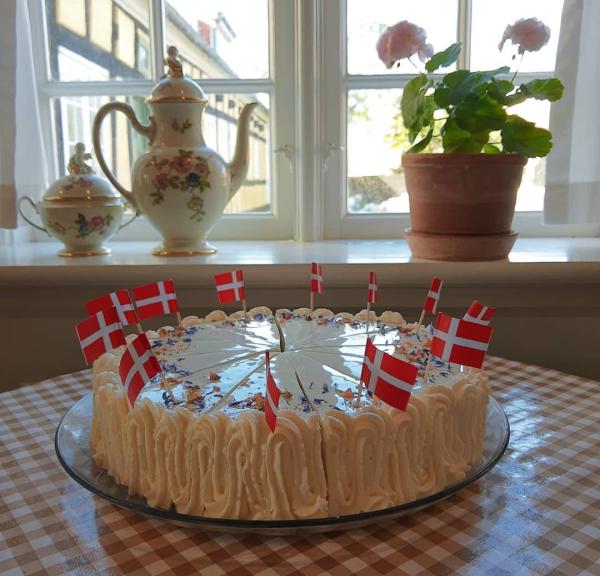

What to eat when.
The Danish cake calendar.
Pick a special occasion, and there’s a cake for it!
Birthdays: Time to eat a kagemand or kagekone (a cake baked in the shape of a man or woman) or, if you’re over the age of 10, a layer cake (a light sponge cake cut into lots of layers, with cream inbetween and berries on the top).
Christmas: Prepare yourself for a cake fest, with butter cookies, cinnamon and cardamom cookies, brunkager, small round vanilla biscuits called vaniljekranse and much more. The one thing they don’t eat is Christmas Cake – raisins do not feature in a typical Danish cake.
New Year’s Eve: At New Year it is traditional to eat kransekage, a tower of 18 of more ring-shaped layers made from almond, egg and sugar. Eaten as the clock strikes midnight (and after we've jumped into the New Year) it's served with a glass of bubbles to welcome the New Year.
February: Seven weeks before Easter, Denmark celebrates Fastelavn with a special type of cream-filled bun called fastelavnsboller that you’ll see everywhere in bakeries and supermarkets.
St. Bededag: On the fourth Friday after Easter, Denmark celebrates ‘Great Prayer Day’ by baking cardamom wheat buns called varme hveder. You can buy them everywhere or make them yourself – just be sure to eat them warm.
Summer: Danish strawberries are so full of flavour that it makes sense that summer is celebrated with a strawberry tart called jordbærkage, topped with fresh strawberries.
More food glorious food!
Now we've whet your appetite, here are some more foodie delights to explore...
